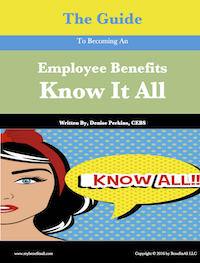The Financial Benefit Of High-Priced Health Care Is What?
September 09, 2019
Fast forward to 2019, and the average single and family monthly health insurance premiums (for a PPO plan) are $567 and $1,584, respectively.
Every year, purchasing life’s necessities gets exponentially harder as health care costs eat away at wage increases and savings. Even if you have enough money to cover your basic needs, paying $600 to $1,600 (or half of that if getting an employer and government tax subsidy), makes buying a car or a house, or starting a new business, impossible for millions of people. Other rich countries, and poor countries, too, realize this and have rejected overpriced health care. American employers, on the other hand, accept health insurance and health care increases as common practice.
Make Health Care Affordable For Employees, Not Just Employers
Employers are concerned, and even angry, about the never-ending annual health plan increases their insurers insists they need. They just aren't willing to take a really tough stand on the issue. And what would taking a tough stand on health insurance costs look like for employers? Employers should place price caps on insurance premiums and copays (we really need to eliminate deductible and coinsurance amounts).
When health insurers, hospitals, doctors, and drug makers realize that their biggest cash cow, employers, is no longer willing to pay what's billed, prices will come down. Medicare already says what it’s willing to pay and, to be fair; some employers are experimenting with variations of price caps e.g., (reference-based pricing). But small fry health insurance and health care price capping doesn't trickle down to the employee level, at least not enough to make health care and life’s other wants and needs affordable. Capping health insurance costs might also lead to greater health care price transparency. Do you want more money? Show us why you need it. We know you want it, but do you need it, and how much more?
Additionally, there are some changes, supported by health care policy experts that employers can do now to lower out-of-pocket medical care costs for employees. Such as,
- Provide deductible and coinsurance-free coverage to treat chronic conditions
- Replace deductible-coinsurance prescription drug plans with traditional, low co-pay-only prescription drug plans, with an annual out-of-pocket cap
- Reduce by half, health insurance premiums for workers from low-wealth households
Conclusion
Workers have long felt the financial strain of paying for subsidized and non-subsidized health care—many have gone into debt or been harassed by debt collectors over medical expenses. Health care is every household's fastest-growing expense, and paying for it often means that other needs go unmet. High health care costs ruins lives—financially and physically, because of the stress. In fact, health insurance is having the opposite effect of what we expect it to have—making people feel financially stable.
Employers need to use their clout to lower health insurance and health care costs for employees. Capping the amount they are willing to pay for insurance and health care, means employees will pay lower premiums and out-of-pocket medical care costs.
It’s nice to understand someone’s struggle, that's the first step. Now is the time to move past empathy and into action. Employers need to significantly cut the costs of employee monthly health insurance premiums and out-of-pocket costs, now. That’s all employees want.
blog comments powered by Disqus


 Denise Perkins
Denise Perkins




